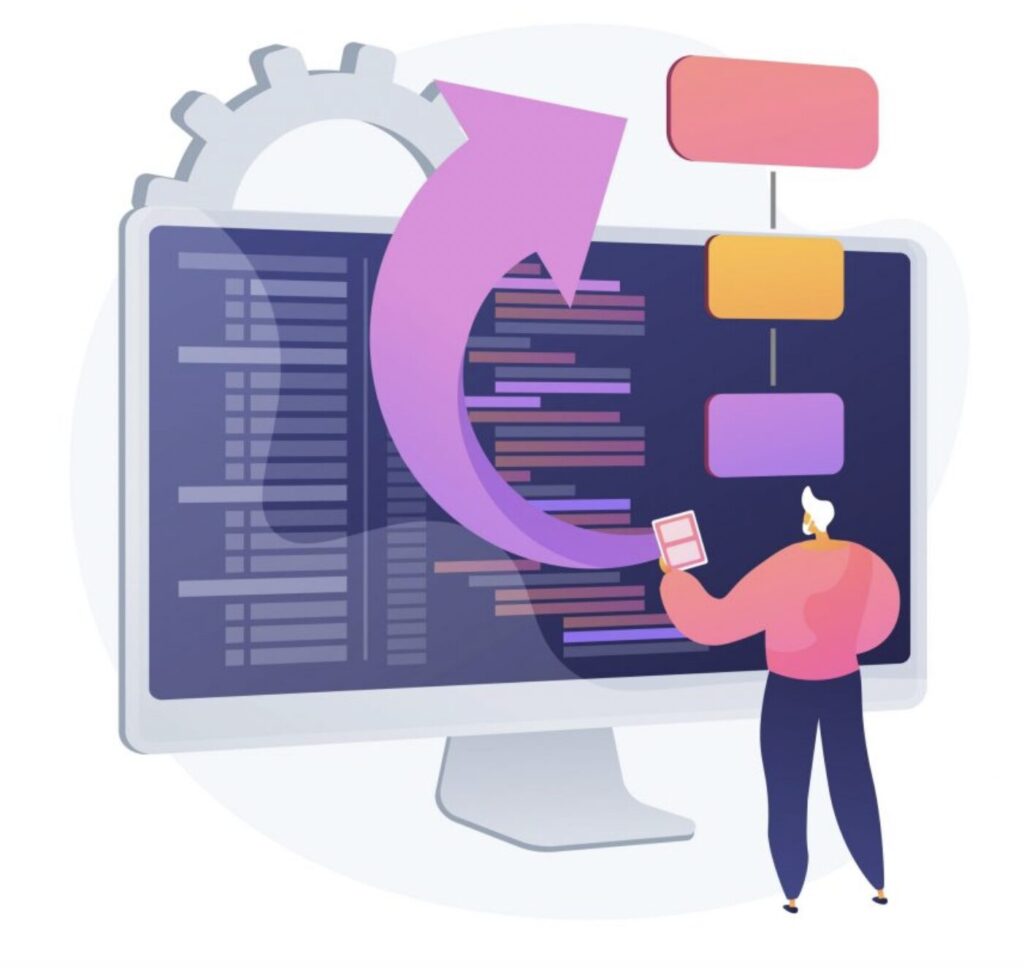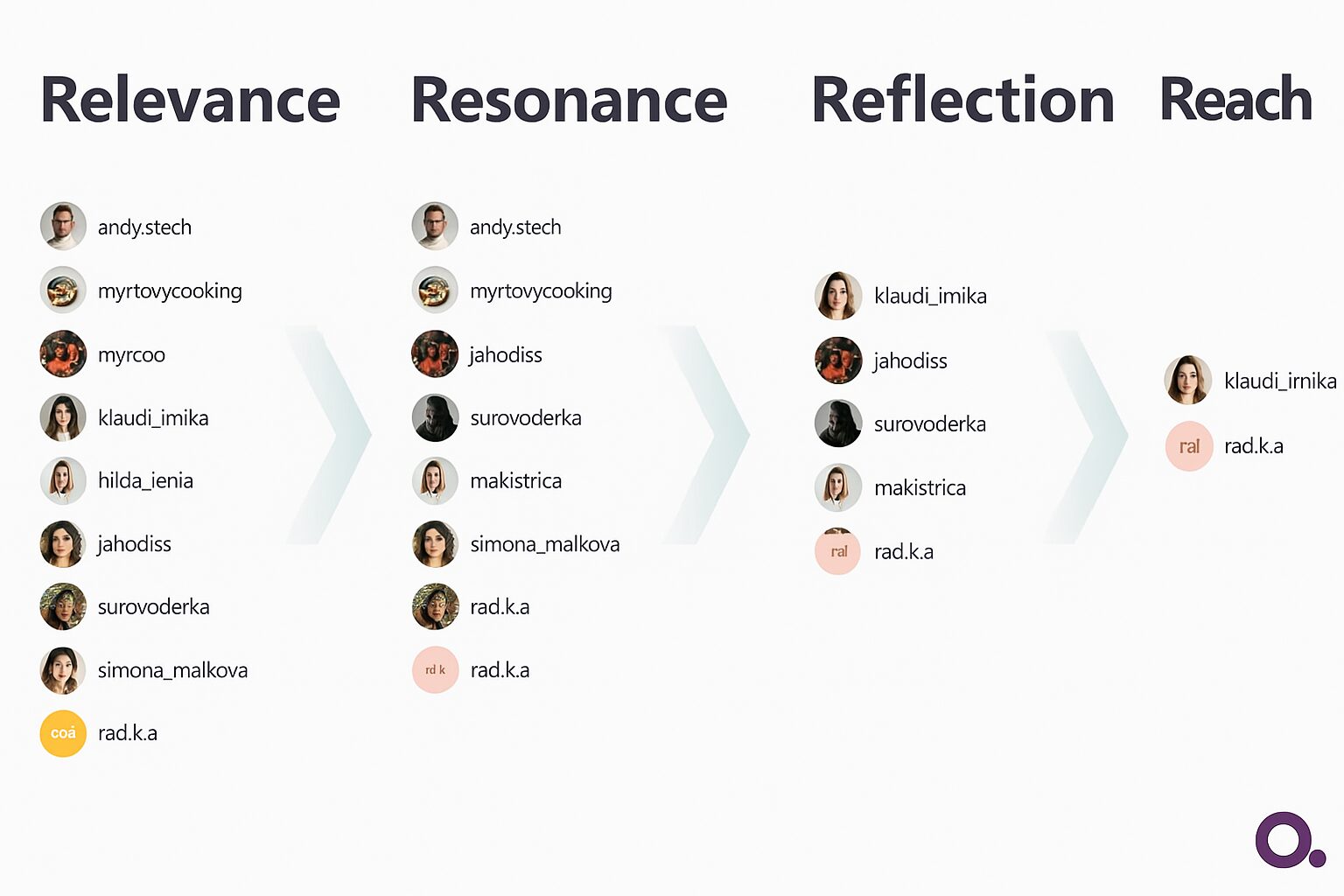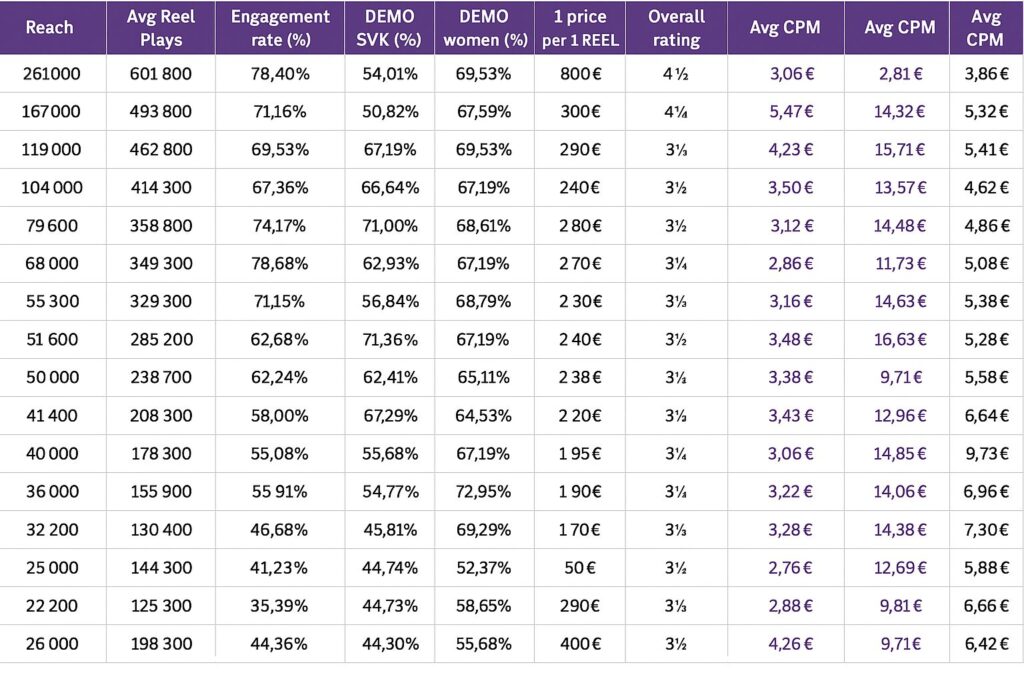
Choosing the right influencers goes far beyond liking someone’s vibe or checking their follower count. In today’s era of data-driven marketing, data should be the foundation of every influencer collaboration. Emotional instincts have no place when budgets are on the line.
In this article, we’ll zoom in on demographics and explain why this data point is crucial for influencer selection. Plus, we’ll share how we, as an influencer marketing agency, approach the process from an analytical perspective.
Demographics: Get to Know the Audience
Demographics provide key stats about an influencer’s audience – such as age, gender, and geographic location. These insights help brands target campaigns more effectively and avoid wasting precious budget.
When working with influencers, always start by defining who you want to reach, before choosing who should reach them. In other words: audience first, influencer second. Ignoring demographics is one of the easiest ways to throw money out the window.
Example:
If your target group is women aged 25–35, you need to verify that the influencer’s followers fall into that age bracket. Geography matters too. If you’re a Slovak brand and your Slovak influencer has 40% of their audience in the Czech Republic (which is surprisingly common), you’re paying to reach people outside your core market.

3 Steps to a Data-Led Influencer Selection Process
An effective influencer selection must go hand-in-hand with analytics. Here’s how we do it—and where demographic data plays a central role.
Step 1: The 4R Method
We begin by compiling a longlist of potentially relevant creators using our 4R method:
- Relevance – Is the content aligned with the brand?
- Resonance – Does the influencer connect with their audience?
- Reflection – Does their image reflect the brand values?
- Reach – What’s their potential impact?
Step 2: Demographic Analysis
Next, we run a detailed demographic check for each shortlisted influencer. These are the top three metrics we consider:
- Gender ratio – What percentage of the audience is male vs. female?
We also break this down by age groups to see gender distribution across generations. - Age distribution – What percentage of followers falls into each age bracket?
Age impacts engagement rate (ER): older followers are generally less interactive on social media. - Geographic location – Where are the followers from?
This depends on the influencer’s language, origin, and whether they’ve purchased followers.
Step 3: The Category Filter
Based on client needs (target audience, minimum ER, etc.), we build a custom selection filter—a checklist of minimum requirements that influencers must meet.
That’s why we create an analytical table for each brand, which might look like this:

Example:
A Slovak beauty brand targeting young women and aiming to boost engagement might use this filter:
- Demographics: 80% Slovak audience, 90% female, 70% aged 18–35
- Engagement Rate: minimum 2%
Context Is Everything
Raw numbers aren’t enough. Contextual analysis means comparing the same type of data across multiple influencers, within the same timeframe and under the same campaign goals.
That’s why we build a custom analytics table for every client. Here’s what it might include:
- Performance data (followers, ER, average reel plays, etc.)
- Demographics (gender, country, age breakdown)
- Price per content format (e.g., one reel)
From these data points, we calculate:
- RATING – overall influencer score (the higher, the better)
- AVG. CPM – average cost per 1,000 impressions (the lower, the better)
A great influencer isn’t just a good fit. They also need to be a smart investment.
Where to Find Demographic Data
- External tools (like Modash or HypeAuditor) – a solid starting point, though not always 100% accurate
- Native analytics (Instagram Insights, TikTok Analytics) – direct screenshots from influencers
👉 Pro tip: For the most accurate data, ask influencers to send you screenshots from their own analytics.
The “Perfect Match” Formula
They say perfection doesn’t exist, but that doesn’t mean we can’t aim for it. Our winning formula combines multiple approaches:
- 📊 Analytical – stats, metrics, demographics
- 📚 Knowledge-based – industry know-how and market insight
- 💡 Intuitive – previous experience and understanding of brand needs
- 🧪 Experimental – test, test, test…
Thanks to this well-rounded approach, we’re able to create influencer-brand partnerships that work—and often exceed expectations. ✨




